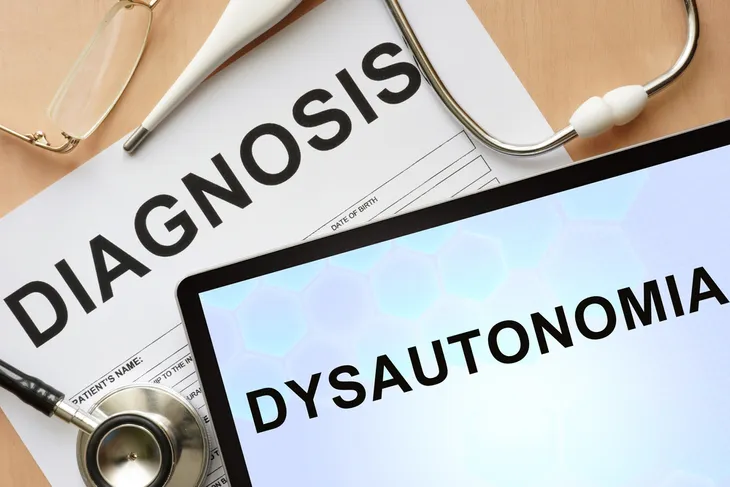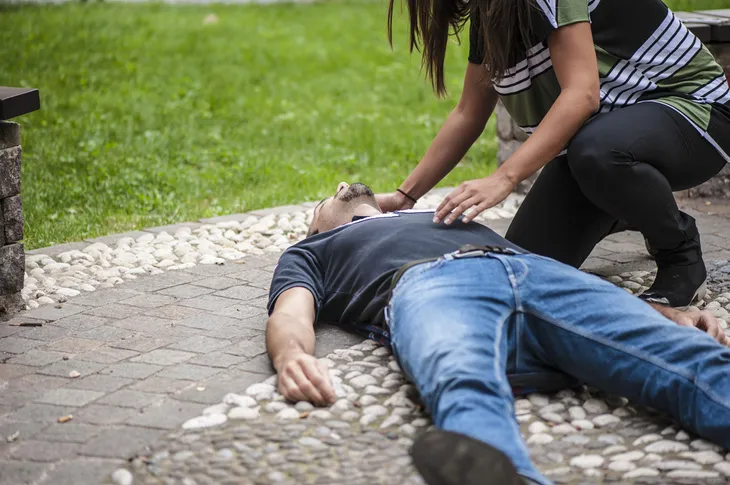Dysautonomia is a term that covers a variety of malfunctions of the autonomic nervous system (all the functions of the body that you don’t consciously control). These functions include blood pressure, heart rate, digestion, kidney function and more, notes Dysautonomia International.
Although you may not have heard of this medical problem, the source explains that it’s not rare – more than 70-million people worldwide have some form of dysautonomia, and people of any age of ethnic background can be affected, it says. Let’s take a closer look at six facts about dysautonomia…
1. There are Primary and Secondary Forms
MedicalNewsToday.com said there are about 15-types of dysautonomia, and there are 2-main forms: primary and secondary. Primary dysautonomia are “usually inherited or due to a degenerative disease,” explains the source, while secondary cases commonly result from another medical condition or injury.
The source adds common conditions that may lead to secondary dysautonomia include diabetes mellitus, multiple sclerosis, rheumatoid arthritis, Parkinson’s disease, and celiac disease.
2. Fainting is a Major Symptom
The most common types of dysautonomia are called neurocardiogenic syncope, which are commonly associated with fainting. The Pediatric Cardiology Center of Oregon explains this condition is cause by a drop in blood pressure, “quickly followed by faster then slower heart rate resulting in poor blood and oxygen flow to the brain which results in temporary loss of consciousness.”
This usually occurs when standing, but can even happen when a patient is sitting down, explains the site. Other causes of neurocardiogenic syncope are stressful situations, motionless standing, dehydration, sleep deprivation, and even hot weather, adds the source.
3. A Common Form is More Common in Women
Dysautonomia International says Postural Orthostatic Tachycardia Syndrome (POTS) is a form of the condition that is estimated to affect between 1-million to 3-million Americans, and is associated with an abnormal heart rate upon standing among other symptoms. It is most commonly observed in women aged 15 to 50 – about 80-percent of POTS patients are female, it adds.
Patients with this form of dysautonomia can have symptoms ranging from changes in blood pressure, nausea, shaking, fainting (syncope), and even a reddish-purple color in the legs when they stand up, it adds.
4. It’s Unpredictable
Disabled World explains that symptoms of dysautonomia can be hard to predict – they can come and go suddenly, appear in combinations and fluctuate is severity, it adds. “People may find themselves involuntarily limiting their lifestyle activities and isolating themselves in order to compensate for the conditions,” notes the source.
It says that many symptoms go unseen or unnoticed by outside observers, although they can be medically verified. Because of this, many people aren’t aware of the severity of dysautonomia and the impact on patients and their families. “Every day and moment brings new and unexpected obstacles to face,” the source says of those who face a form of the condition.
5. Prognosis is Not Often Positive
Brainfacts.org said depending on the type of dysautonomia, the prognosis can vary. However, patients with “chronic, progressive, generalized dysautonomia” associated with central nervous system generation have a “generally poor long-term prognosis.”
Patients can pass away from complications resulting from dysautonomia such as pneumonia, acute respiratory failure, or sudden cardiopulmonary arrest, adds the source.
6. There are Treatments
BrainFacts.org adds, “There is usually no cure for dysautonomia,” and that treatment of primary dysautonomia is “symptomatic and supportive.” However, the secondary forms of the condition may improve when the underlying cause is addressed, it adds.
One of the major symptoms of dysautonomia – a drop in blood pressure called orthostatic hypotension – can be treated with elevation of the head, rapid intravenous infusion of water, a high-salt diet, and certain drugs (such as fludrocortisone and midodrin), it adds.









